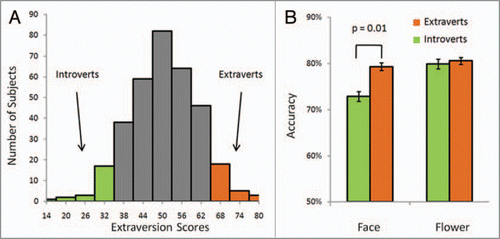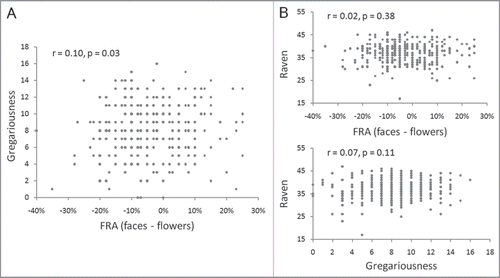Figures & data
Figure 1 The relation between extraversion and face recognition ability. (A) Distribution of extraversion scores. The number of extraverts and introverts were 20 and 23 respectively, constituting approximately 12% of the total subjects tested. (B) The extraverts performed better at face recognition task, but not at flower recognition task, than introverts. The dissociation of Extraversion by object recognition suggests that the link between extraversion and face recognition is related to face-specific processing. Accuracy is shown on the y-axis and the error bar indicates standard error.

Figure 2 Gregariousness and face recognition ability. (A) Gregariousness is positively correlated with face-specific recognition ability (FRA, the difference score between accuracy in recognizing faces versus flowers). (B) Both gregariousness and FRA are not correlated with IQ measured by Raven APM.
